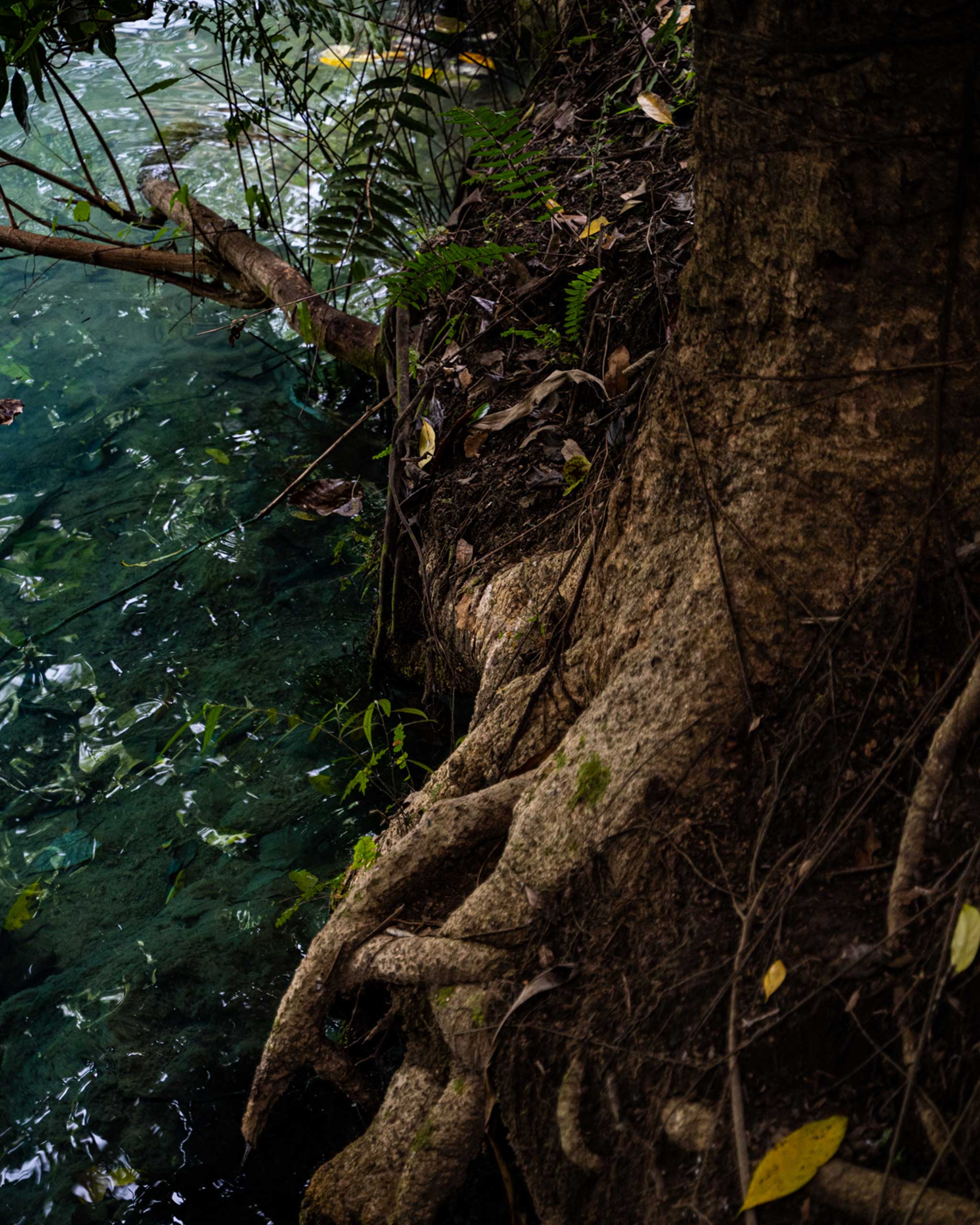If the forest could speak, what would it say? Courtesy of Gab Mejia
If the forest could speak, what would it say? At Objectifs 2025, Gab Mejia explores the ties between land, spirit, and people through the Baylan in his award-winning photo series.
Nature is a witness: to death, degradation, and violence, but also to life, growth, and resilience. Gab Mejia’s “The Forest Listens, Their Spirits Cry” is a meditation on the connections between land, spirit, and people. The series, which won the Open Category at the 2024 Objectifs Documentary Award, explores the struggles of the Filipino indigenous shamans called the Baylan, whose rituals and wisdom are at risk of disappearing alongside the forests they protect.
The Objectifs Documentary Award supports Southeast Asian photographers who bring stories from their communities to light. Selected through an Open Call, the 2024 recipients were given six months of mentorship, financial support, and guidance to create work rooted in their lived realities. The resulting exhibitions run from April 4 to May 18, 2025, at Objectifs’ Chapel and Lower Galleries in Singapore.
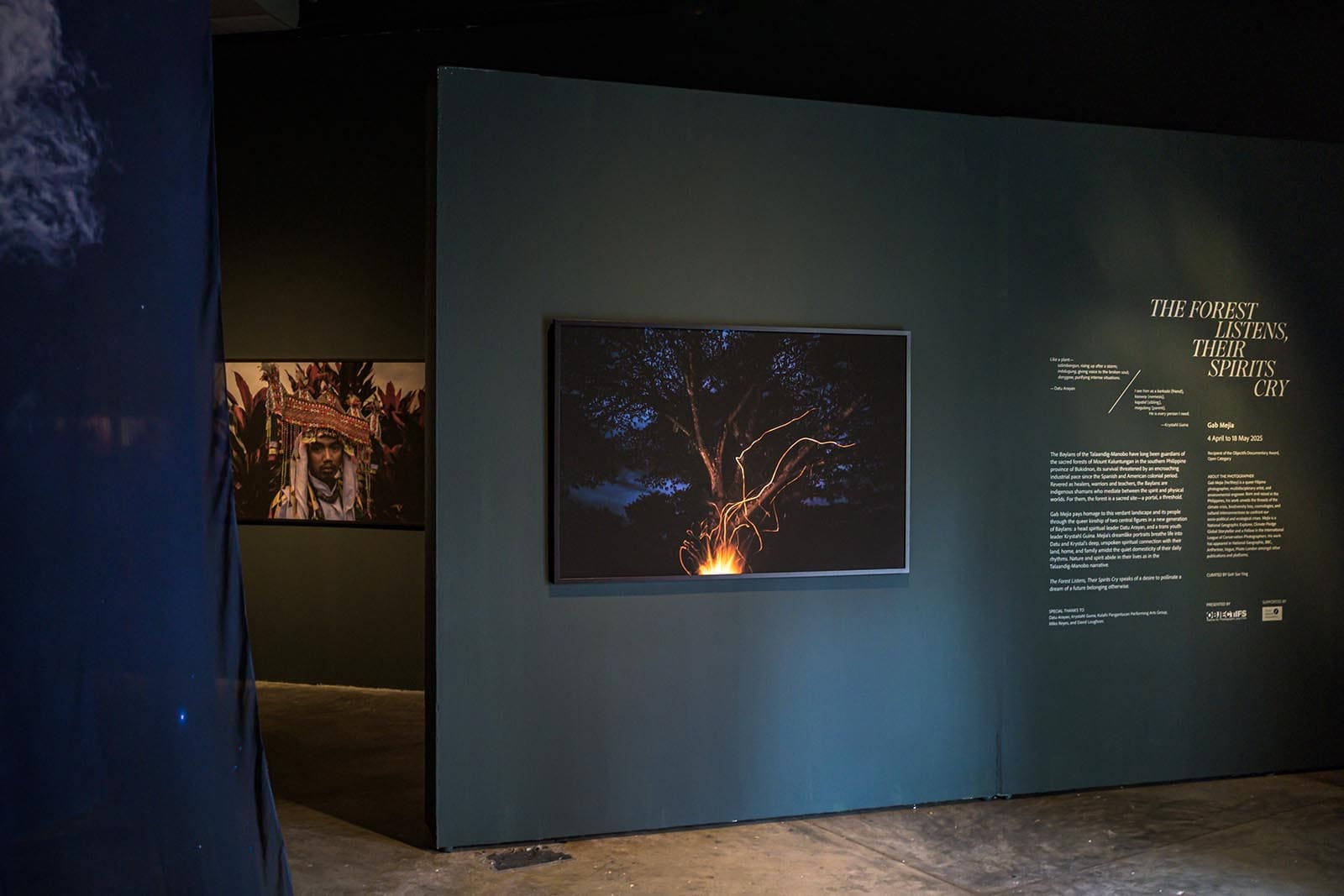
In his winning piece, Mejia, a queer Filipino photographer, environmental engineer, and multidisciplinary artist, captures the Baylan’s resilience and grief with sensitivity. Their images linger on gestures and landscapes, evoking rituals that hold memory, defiance, and vulnerability. For the series, Mejia worked with members of the Talaandig-Manobo tribe including Krystahl Guina, who was previously featured in 2024’s Mindanao issues.
In an exclusive interview, Mejia talks about the journey to winning the award, the challenges, and the impactful moments that came along with it.
In your winning piece, “The Forest Listens, Their Spirits Cry,” how did you approach capturing the essence and spirituality of the Baylan? What creative choices did you make to convey their story?
I guess instead of capturing, it was more of just echoing. The spirituality and the Baylan have already long been here as practiced by the Talaandig-Manobo indigenous people of Bukidnon throughout hundreds of years, and have practiced their ecological traditions, their self-determined identities, and resisted away from colonial narratives.
And to remain true to this spirit of fluidity and queerness, we didn’t have a certain or prescriptive creative approach. I was more of just an open vessel, allowing the fluidity of the story and the uncertainty and length of time to allow it to shape the story of Krystahl and Datu Arayan as the role models of the Baylan in our generation. It took us about 2 years to actually make this story, because we also had our own lives and stories to live.
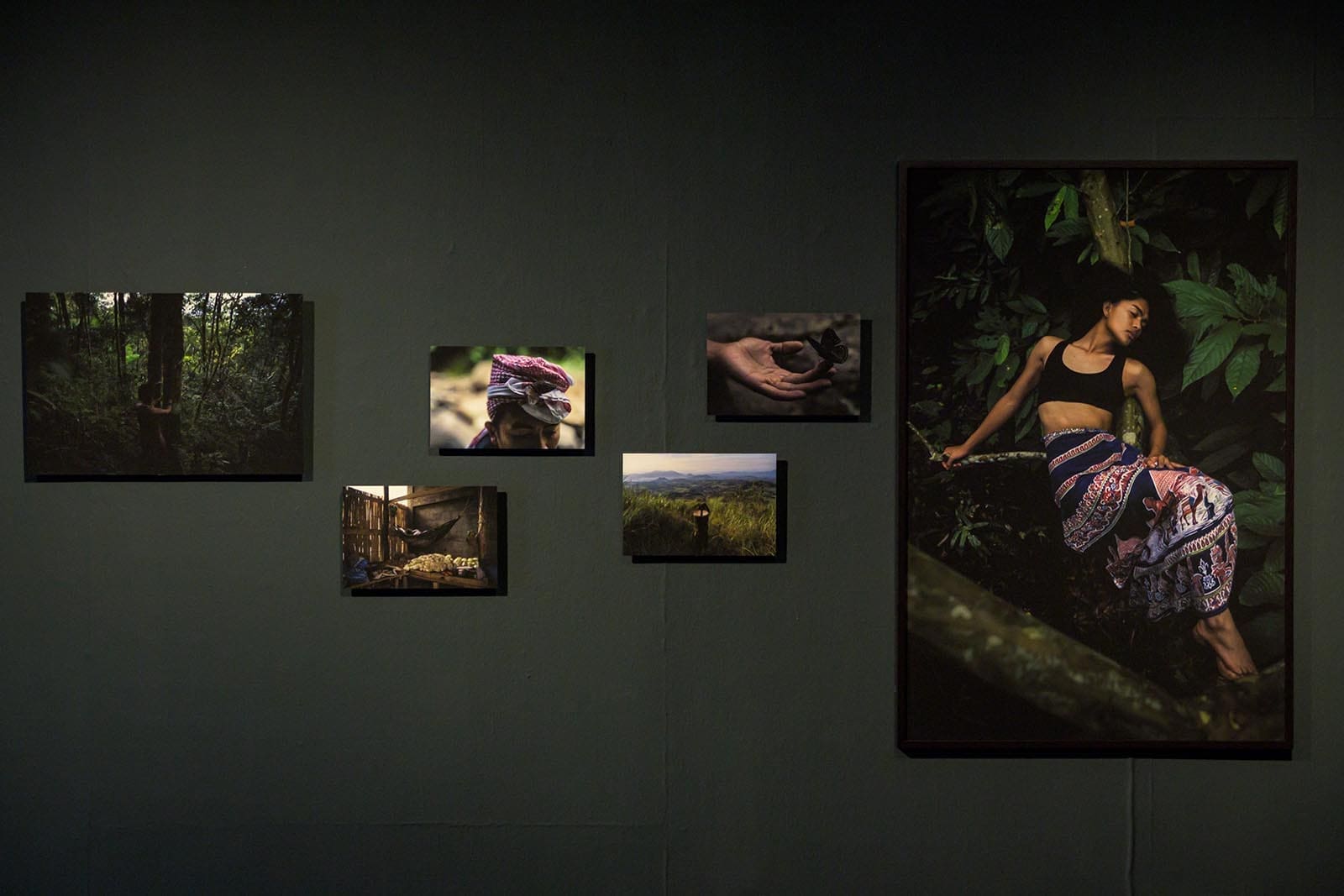
What challenges did you encounter while photographing the Baylan, and how did you overcome them to create authentic and respectful representations?
I think one of the greatest challenges is unseeing. I really broke away from my upbringing of a traditional documentary photographic practice as a National Geographic Explorer. I allowed more speculation and questions to exist, rather than to give answers through my photographs. Before even taking photographs, we had to get permission from the council of elders of the Baylan and communities.
We co-created what we envisioned by asking each other how we see each other, how we see ourselves; we wrote this on a cartolina paper and stayed true to it. We hung out as friends, supported each other through our personal dreams, traveled through the mountains together, the Baylan visited in Manila, went through tens of rituals with the elders and Datu Arayan, and launched transmedia exhibits in the National Museum together.
There was just a cacophony of experiences of unseeing and seeing and unseeing again, that to create and be respectful, representation was more than just how we identify ourselves and see each other in a photograph, but more of just how we can be as human as possible to each other. There was no space for the other to exist. Yes, the Baylan is a spiritual and significant respected role of the community, but it is also where we found a home to our queerness, a space beyond the confines of it just being a pre-colonial or exoticized anthropological term away from Western identity politics.
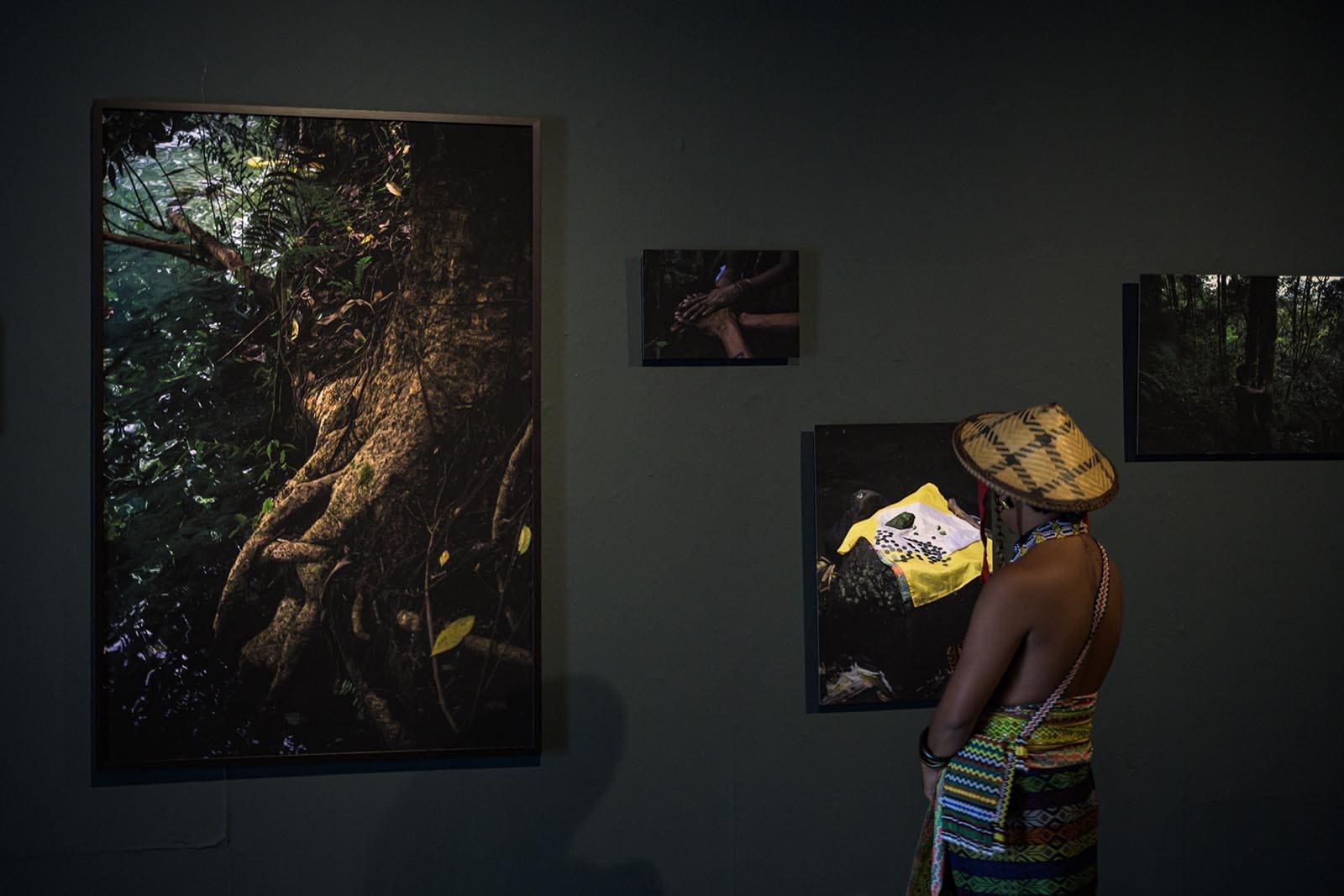
Can you share a moment from this project that deeply impacted you as a photographer?
There’s just so much that has deeply touched and transformed me as a photographer throughout this journey! But if there’s just one moment, I guess it was more than year into this journey on one night on the tribal view deck with Krystahl Guina, Datu Arayan, Baylans, the Kulahi Pangantucan Performing Art, David Loughran, Alaga, Miko Reyes, Nicola Sebastian, Sam Zarandin, Hix Murakami, The Sundrop Garden (June Marieezy), JB Estrada (hehe I want to name them all because they are all special)— basically our whole queer and women film crew and the family we had made and chose working on the other parts of this project for the film Baradiya.
It was just so special. It was under the moonlight, it was cold from the crisp mountain air of Mt. Kalatungan, and we were just around the bonfire, singing songs, dancing to the thuds of a thousand drum beats, listening to each other’s personal stories, our sufferings, our joys, and all our different and diverse lives coming together as artists, as friends, as Baylan, and spirits— as we are.
I’ve grown up with photography embodying its solitary and nomadic nature as a craft and medium, and it was this night, that for once, as someone who’s a late bloomer and queer. I felt at home, that I can belong, to be safe and be vulnerable as a photographer and as myself. Where on that night we imagined together new ideas of belongingness, and dream together of a future belonging otherwise. To unearth all that decomposes, to bring life to the stories and ecological knowledge that have been burned and buried along with the multiplicities of Filipino identities that have been vilified and marginalized in an increasingly polarized world.
It made me believe in photography again. And I guess all of these awards, exhibits, and among other things are just the flowers that grow from a seed that you nurture. The stories we hold and the stories that grow.
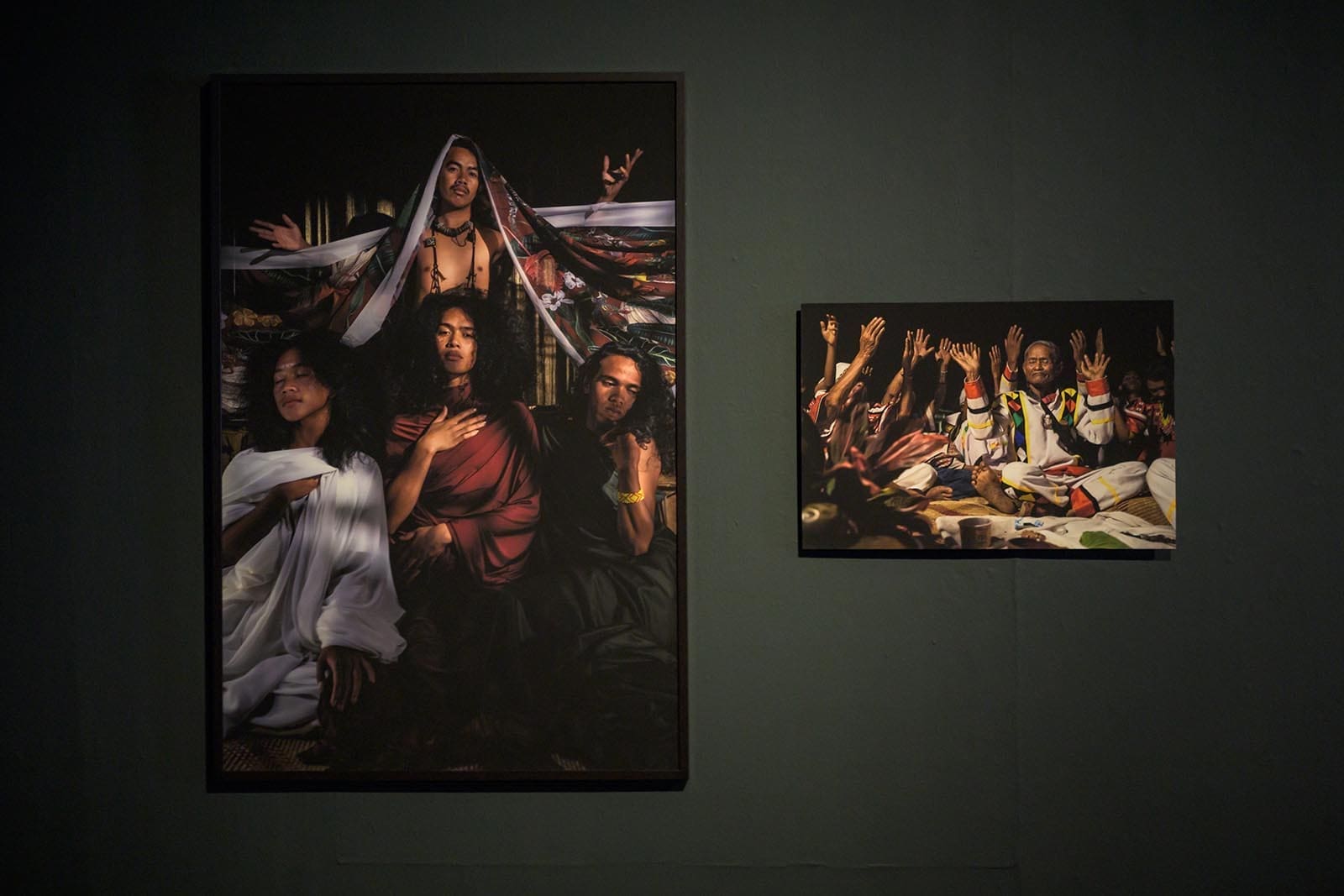
What does winning in the Open Category in 2024 mean to you? What was the entire journey like?
I haven’t truly figured out what it actually means, but I guess, if it was a question of how it feels. It has been such a journey of tremendous change and transformation, both individually and collectively. The journey began more than two years ago on the tribal view deck with the sacred Mt. Kalatungan and Mt. Kilakiron with and around us in Bukidnon with Datu Arayan, Krystahl Guina, David Loughran, and the Kulahi Pangantucan Performing Arts Group. It was a tiny seed, a promise we made with each other on how we envisioned a space where queer and indigenous stories could more than just exist, but to expand from and away from the histories of colonial violence, discrimination, and continued injustices happening across the fragmented forests of the Philippines and our communities. And today through this exhibit in Objectifs in Singapore, I was able to live and embody this promise as my role as photographer to challenge these dominant narratives on queer ecology by sharing this gaze as guided by the elders and the Baylan of Mt Kalatungan through my first solo exhibit in Singapore along with the exhibit we did at the National Museum of the Philippines last September 2024, and the community exhibits we did in Bukidnon last August 2024.
This exhibit in Objectifs is a continuation of this, where the staging and curation of the exhibit was much more intense and different to make sure I could give justice to this promise and their photographs as well as to share my own voice within the larger story. I was guided by my curator Goh Sze Ying from the National Gallery of Singapore, and I also felt lucky in a way where we were aligned on queering the traditional formats of a photographic exhibition that was rooted in documentary practices. We broke away from the linearity of narratives of traditional documentary, and allowed the poetry of the forests to speak for itself, while maintaining the contextual integrity of the realities of environmental destruction and cultural extinction happening in Bukidnon.
The 7th Objectifs Documentary Award Exhibitions are open to the public from April 4 to May 18, 2025, with free admission. The images invite viewers to see and listen: to spirits, to water, to people, to nature.
